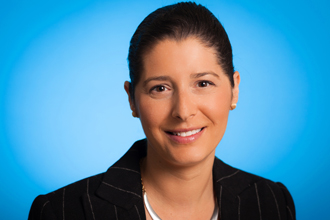Using patient engagement to improve outcomes in health-care redesign

By Mary Dickie

Dr. Yvonne Bombard
Around the world, patient engagement is increasingly seen as an important element in the redesign of health-care services. But what impact does that engagement have on those services, and what kinds of innovations can it lead to? Dr. Yvonne Bombard, a scientist at the Li Ka Shing Knowledge Institute at St. Michael’s Hospital, decided to find out by undertaking a comprehensive review of the international literature over the past three decades and across a wide range of health-care disciplines.
In their paper Engaging Patients to Improve Quality of Care: A Systematic Review, published in Implementation Science, Dr. Bombard and co-lead author G. Ross Baker, professor and program lead, quality improvement and patient safety at the University of Toronto’s Institute of Health Policy, Management and Evaluation, concluded that patient engagement can inform education, tools, planning and policy, and enhance health-care service delivery and governance.
“We looked at all the international literature across all care settings, and found that the more patients were engaged as partners and co-designers, the higher the level of outcomes,” said Dr. Bombard. “There are different levels of engagement. If patients were just consulted, often what we saw in terms of outputs were products like patient information kits. Active involvement of patients in design was linked to more substantial outcomes like designing new delivery systems, adding support systems like a mental health advocate, and creating new governance documents and policies at the top echelons of the hospital.”
At St. Michael’s, patient engagement is a key element in the network’s quality improvement plan, and creating opportunities for patients and community members to share their voices contributes to the goal of providing the best possible patient experience. One strategy employed at St. Michael’s is including patients and family members in advisory councils to provide feedback, identify needs and concerns and come up with fresh ideas for patient care.
Marcia Zalev is a former social worker who sits on a patient and family advisory council at St. Michael’s that meets monthly. “There are patients sitting on many committees in the hospital now, and that’s a bit of a culture shift,” she said. “I think it enriches everybody. It’s really about getting a different perspective on what’s happening in the hospital, and hearing the stories of our experiences as patients and family members helps. Stories are a good way to change culture. And I think the sense of being part of the team is really important. When you have a sense of ownership, it makes a huge difference.”
“Patients have a different view on what happens in hospitals, and their insights can be helpful in identifying duplication, waste, failure to co-ordinate and other issues,” said Dr. Baker. “Providers see the care that they’re directly engaged in, but the patient sees all the care.”
Dr. Baker pointed out that higher levels of patient engagement require additional investments in training and support that would only be appropriate for larger projects.
“If you really want to focus on redesigning care, you have to bring in patients in a much more active way,” he said. “The key message is that there are successful examples of people who have engaged patients to do broad scale redesign, and we should learn from the strategies they’ve used. And there’s more research needed to detail what patient engagement strategies are suitable for what kinds of projects.”
This paper is an example of how St. Michael’s Hospital is making Ontario Healthier, Wealthier, Smarter.
About St. Michael’s Hospital
St. Michael’s Hospital provides compassionate care to all who enter its doors. The hospital also provides outstanding medical education to future health care professionals in more than 29 academic disciplines. Critical care and trauma, heart disease, neurosurgery, diabetes, cancer care, care of the homeless and global health are among the Hospital’s recognized areas of expertise. Through the Keenan Research Centre and the Li Ka Shing International Healthcare Education Centre, which make up the Li Ka Shing Knowledge Institute, research and education at St. Michael’s Hospital are recognized and make an impact around the world. Founded in 1892, the hospital is fully affiliated with the University of Toronto.
